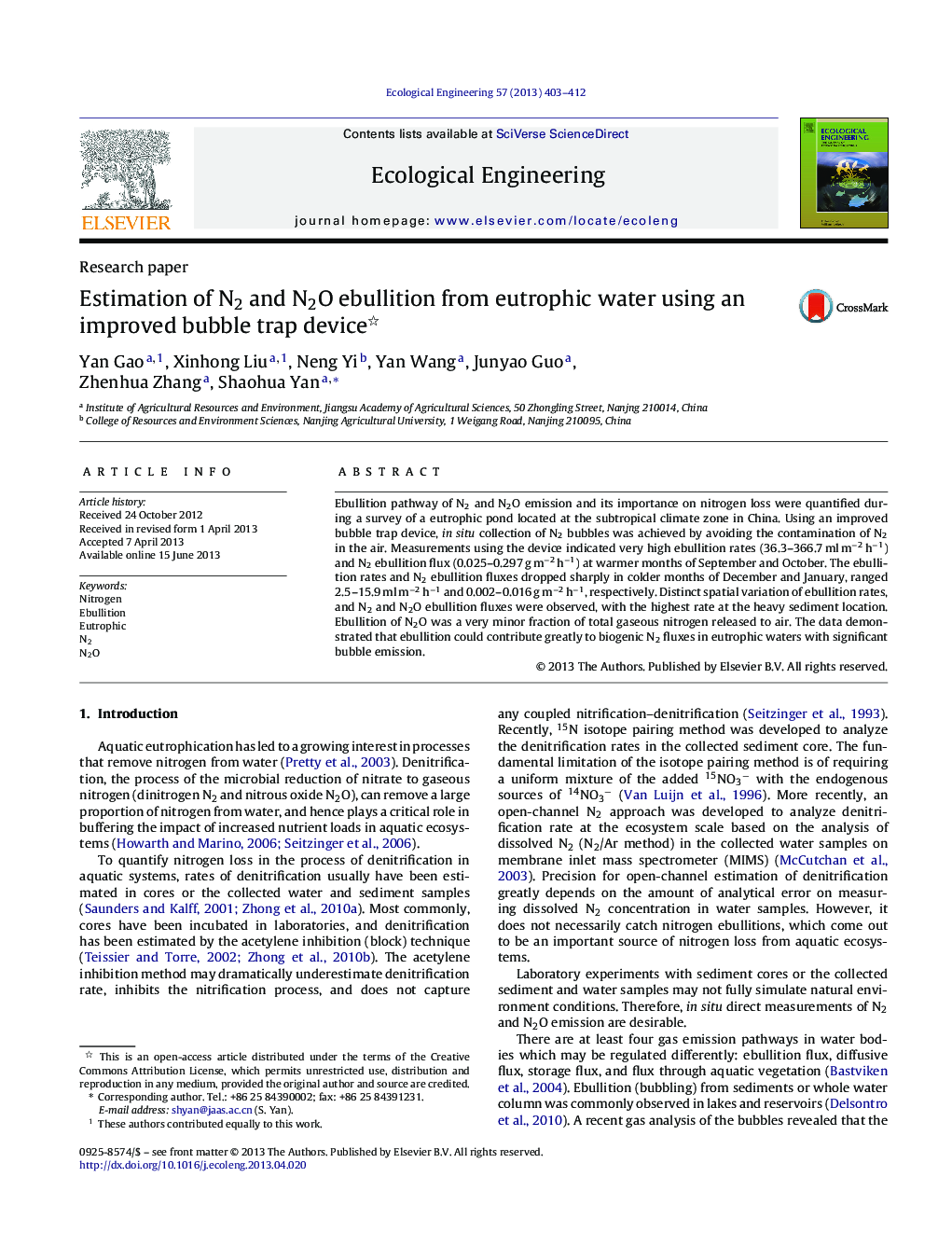| Article ID | Journal | Published Year | Pages | File Type |
|---|---|---|---|---|
| 6302646 | Ecological Engineering | 2013 | 10 Pages |
Abstract
Ebullition pathway of N2 and N2O emission and its importance on nitrogen loss were quantified during a survey of a eutrophic pond located at the subtropical climate zone in China. Using an improved bubble trap device, in situ collection of N2 bubbles was achieved by avoiding the contamination of N2 in the air. Measurements using the device indicated very high ebullition rates (36.3-366.7 ml mâ2 hâ1) and N2 ebullition flux (0.025-0.297 g mâ2 hâ1) at warmer months of September and October. The ebullition rates and N2 ebullition fluxes dropped sharply in colder months of December and January, ranged 2.5-15.9 ml mâ2 hâ1 and 0.002-0.016 g mâ2 hâ1, respectively. Distinct spatial variation of ebullition rates, and N2 and N2O ebullition fluxes were observed, with the highest rate at the heavy sediment location. Ebullition of N2O was a very minor fraction of total gaseous nitrogen released to air. The data demonstrated that ebullition could contribute greatly to biogenic N2 fluxes in eutrophic waters with significant bubble emission.
Keywords
Related Topics
Life Sciences
Agricultural and Biological Sciences
Ecology, Evolution, Behavior and Systematics
Authors
Yan Gao, Xinhong Liu, Neng Yi, Yan Wang, Junyao Guo, Zhenhua Zhang, Shaohua Yan,
